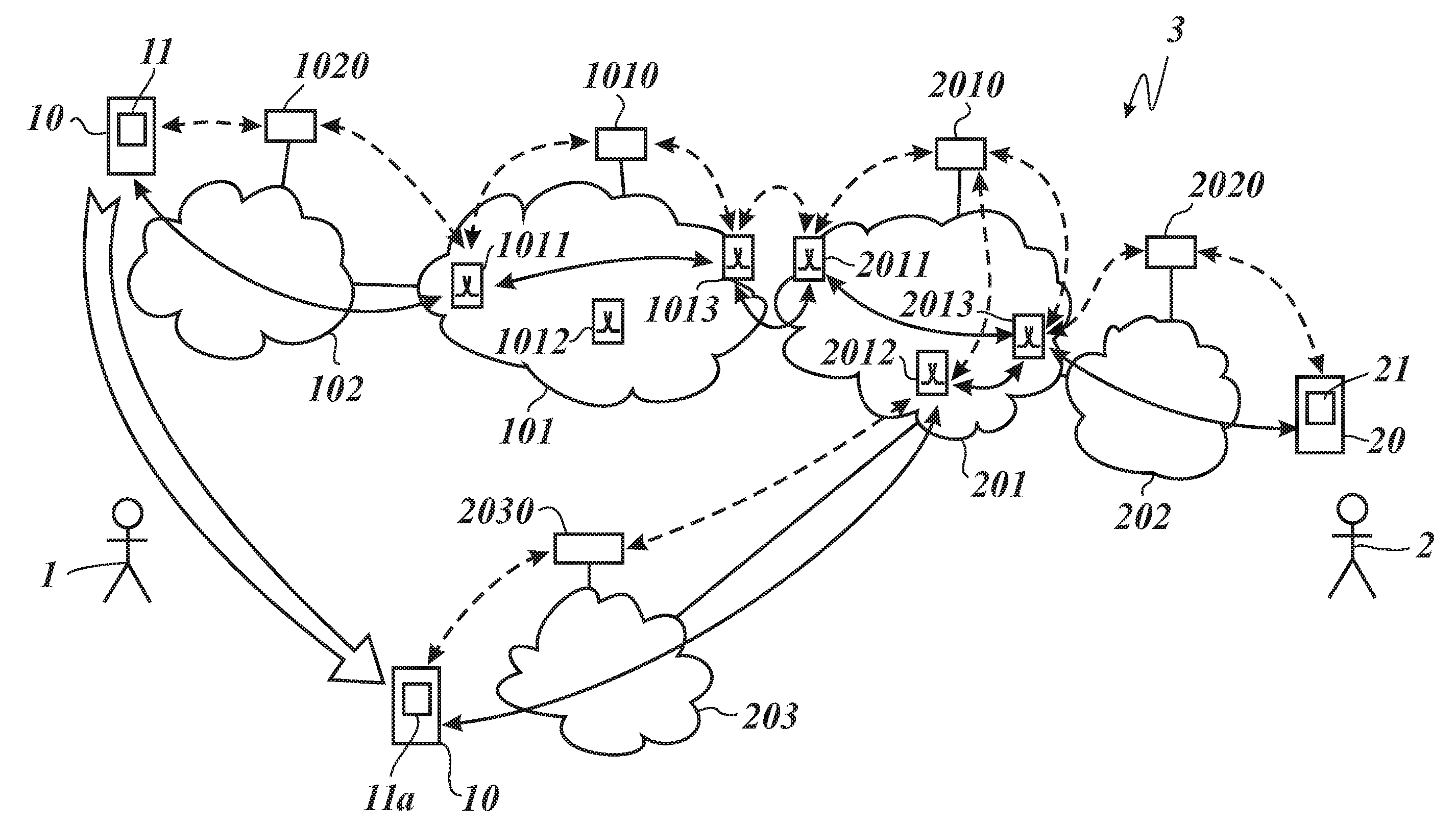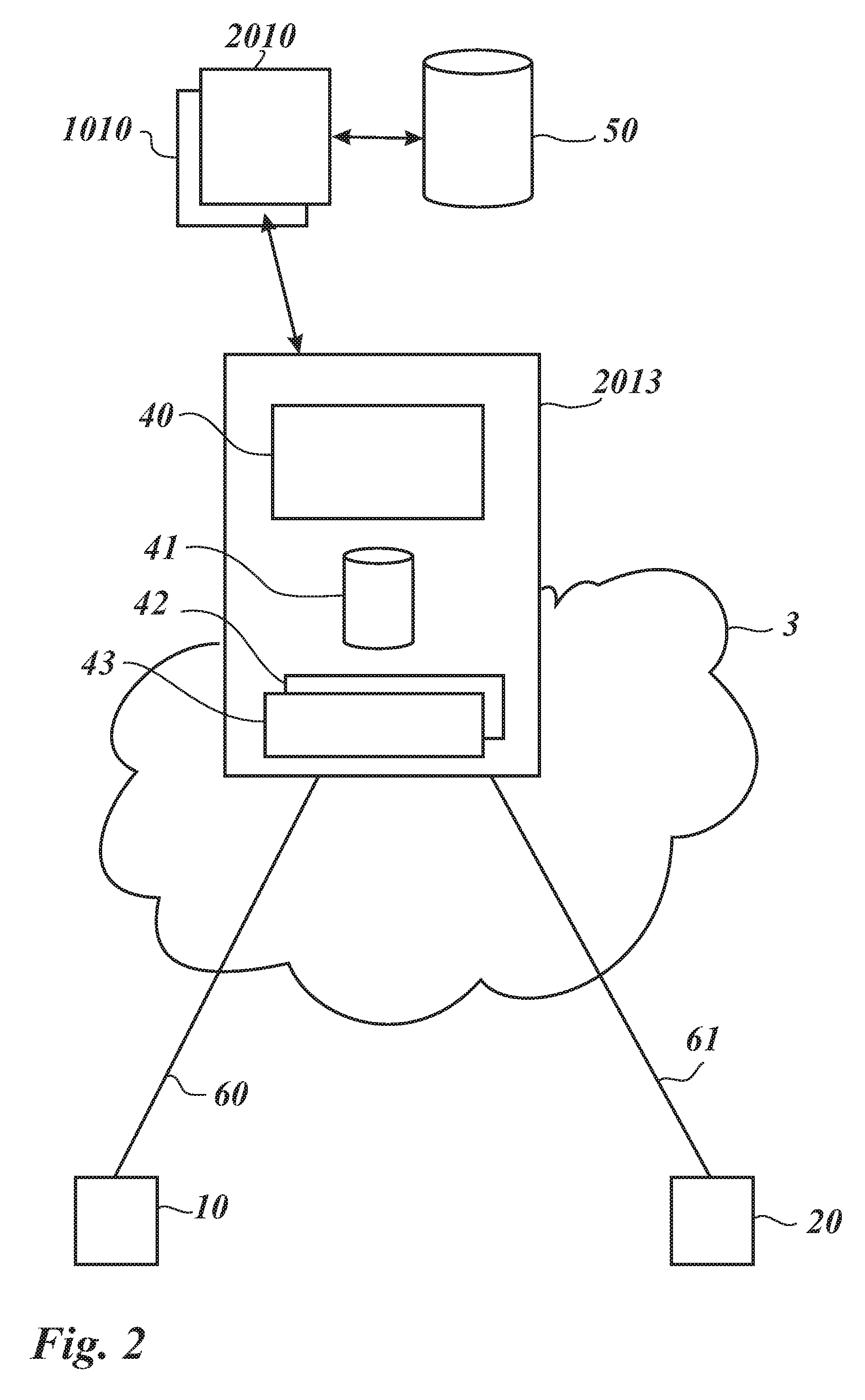Method of Providing Session Mobility
a session mobility and mobility technology, applied in the field of providing session mobility, can solve the problems of no seamless session continuity, significant handicaps of approaches, and major privacy drawbacks, and achieve the effect of improving session mobility
- Summary
- Abstract
- Description
- Claims
- Application Information
AI Technical Summary
Benefits of technology
Problems solved by technology
Method used
Image
Examples
third embodiment
[0049]In a third embodiment, not shown, one could also imagine that the hand-over comprises only a session hand-over with regard to terminals. For example, the first subscriber 1 communicates with the second subscriber 2 by means of a first mobile telephone. The session streams are transferred to the first mobile telephone via a mobile access network of a mobile telecommunications provider. However, a need arises for the first subscriber 1 to change to another mobile telephone while still in the same mobile access network.
first embodiment
[0050]The following description will refer to the However, the same invention applies also to the other embodiments in an analogous manner. The first subscriber 1 may initiate the hand-over by triggering the generation of a corresponding re-invite SIP signalling message. The first subscriber 1 may press a button on the keypad of the terminal 10. It is also possible that the first subscriber 1 has adapted his terminal 10 such that the terminal automatically generates a corresponding hand-over request message whenever the terminal 10 enters a hotspot coverage area giving access to a WLAN. The subscriber 1 may have entered his preferences to the terminal 10, and adapted the control of the terminal 10 such when entering the coverage area of a wireless network access point (WLAN hotspot) the terminal automatically initiates a hand-over to the current WLAN.
[0051]A SIP invite message sent after a successful initial invite request, in an existing session dialog, is called re-invite. A SDP ...
PUM
 Login to View More
Login to View More Abstract
Description
Claims
Application Information
 Login to View More
Login to View More - R&D
- Intellectual Property
- Life Sciences
- Materials
- Tech Scout
- Unparalleled Data Quality
- Higher Quality Content
- 60% Fewer Hallucinations
Browse by: Latest US Patents, China's latest patents, Technical Efficacy Thesaurus, Application Domain, Technology Topic, Popular Technical Reports.
© 2025 PatSnap. All rights reserved.Legal|Privacy policy|Modern Slavery Act Transparency Statement|Sitemap|About US| Contact US: help@patsnap.com



